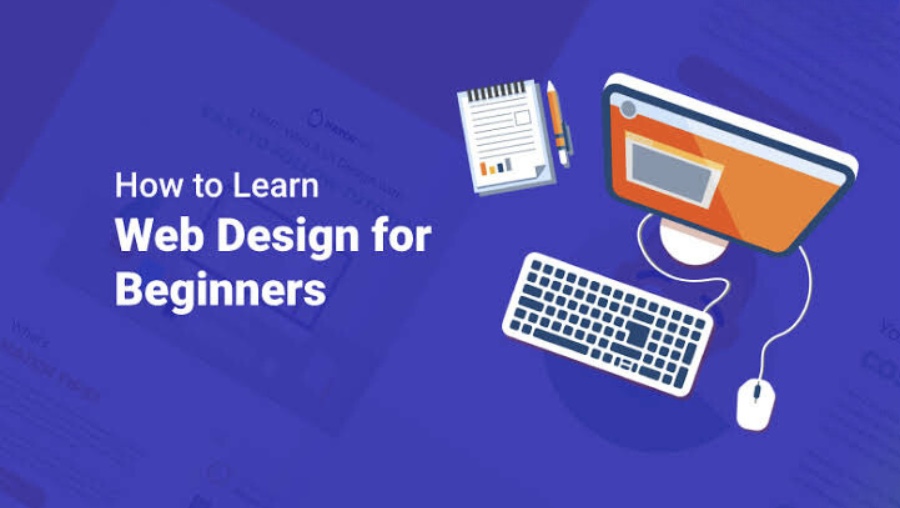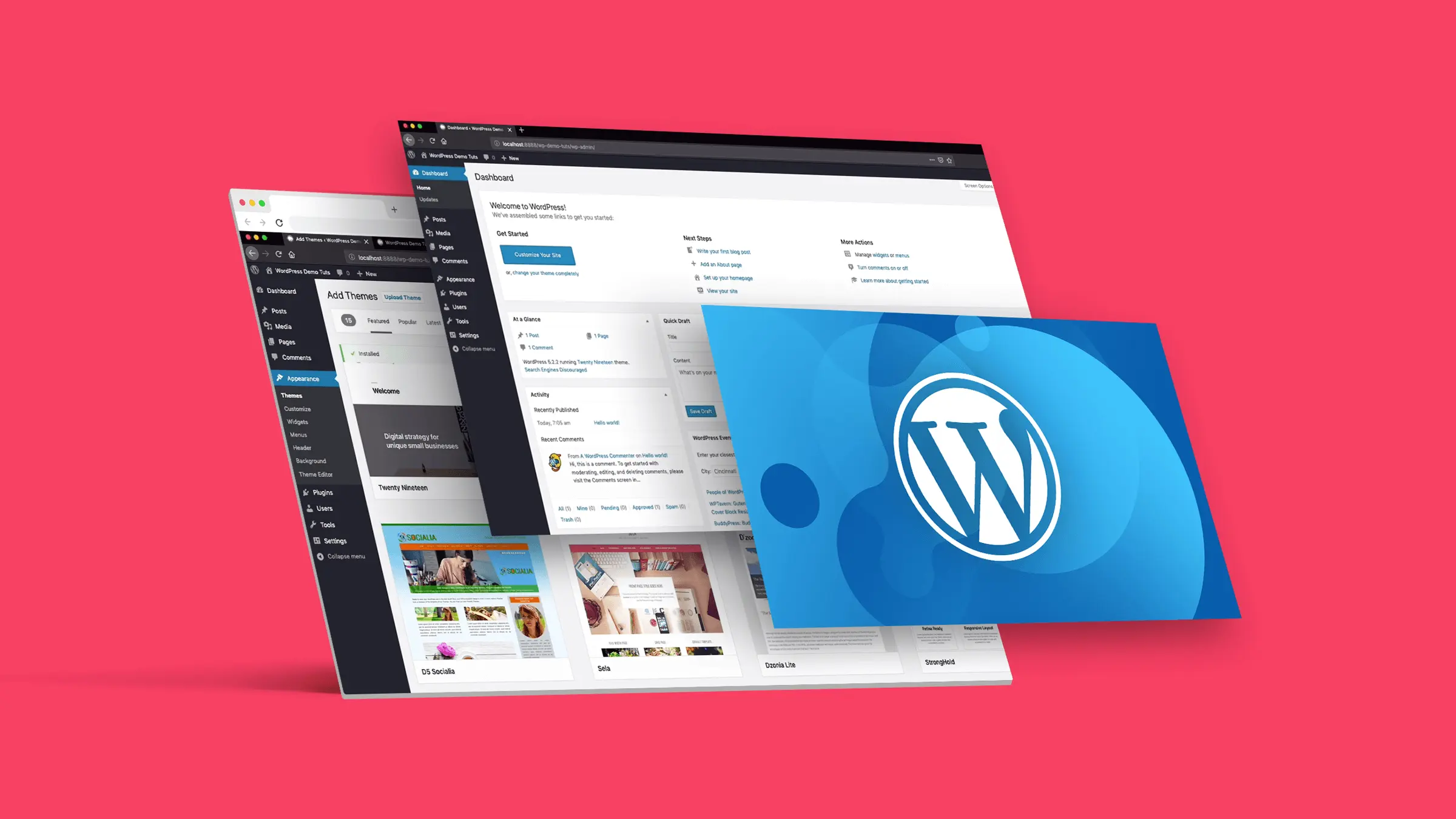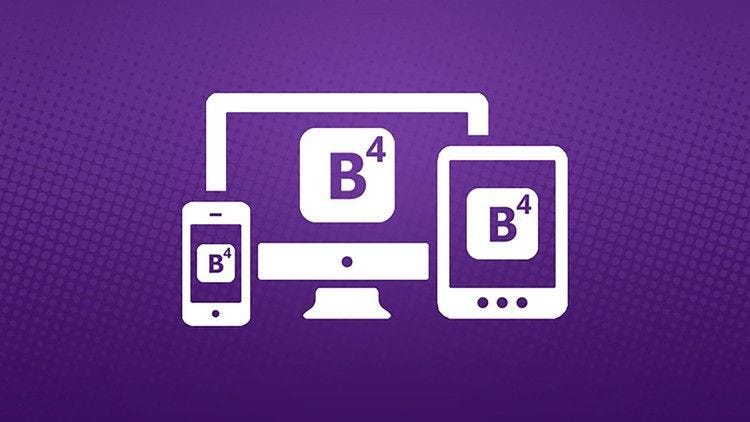
Steps to Make a Website from Scratch in India: A Detailed Guide
Are you looking to create a website from scratch in India? Don't worry, it's easier than you think. In this comprehensive guide, we will walk you through the steps to make a website from scratch in India, whether you're a beginner or have some experience with website development.
Creating a website from scratch in India can be a daunting task, but with the right guidance and approach, you can build a professional and impactful online presence. Our detailed guide will help you navigate the website creation process, covering everything from planning and design to development and maintenance.
By following these steps, you can create a website that perfectly aligns with your brand and business goals, and that resonates with your target audience. Let's get started with the steps to make a website from scratch in India!
Understanding the Website Development Process
If you're planning to make a website from scratch in India, it's essential to understand the website development process. Website development involves several stages that must be completed in a certain order to achieve a professional and functional website. In this section, we will discuss the key stages involved in building a website, from planning and designing to development and maintenance.
The website development process typically involves five stages which are planning, designing, building, testing, and maintenance. Each of these stages is essential and must be completed in sequence to launch a successful website.
A website building guide is a comprehensive resource that outlines the steps involved in building a website. It provides useful information on website planning, design, development, and maintenance. Additionally, it offers tips and best practices that can help streamline the website development process and ensure the website's success.
Planning Your Website Design and Structure
Planning is a crucial step in creating a successful website. To start, you need to determine the purpose of your website, the target audience, and the content you want to include. Once you have a clear idea of these factors, you can move on to planning your website's design and structure.
A well-thought-out design and structure can enhance user experience and help you achieve your website goals.The layout of your website should be visually appealing and easy to navigate. There are different layouts to choose from, such as fixed or fluid layouts, grid-based layouts, and single-page layouts. The layout you choose should align with your website's purpose and content.
Navigation is the backbone of your website's structure. It helps users find the information they need quickly and easily. Your website's navigation should be simple and intuitive, with clear labels and a logical order.
Your website's design elements, such as color, typography, and images, should be consistent with your brand identity and website purpose. Choose a color scheme that is visually appealing and easy on the eyes. Use typography that is easy to read and aligns with your brand tone. Include high-quality images that are relevant to your content.
To ensure a smooth website development process, create a website development checklist. This checklist should include all the essential steps you need to take, such as registering a domain name, selecting hosting, designing the UI, and optimizing for search engines. This checklist will help you stay organized and avoid any critical steps in your website development.
Planning your website design and structure can take some time, but it's a crucial step in achieving your website goals. By following these website design steps and creating a website development checklist, you can create a visually appealing and user-friendly website that aligns with your brand identity and purpose.
Registering a Domain Name and Selecting Hosting
Registering a domain name is an important step in website creation in India. Your domain name is your website's unique identifier, and it's crucial to choose one that's easy to remember and relevant to your business or brand. When selecting a domain name, consider its length, spelling, and availability. You can register your domain name through domain registration services like GoDaddy, BigRock, or Namecheap.
Once you've registered your domain name, the next step is to select a reliable hosting provider. A hosting provider is a company that stores your website's files on its servers and makes them accessible to visitors on the Internet. There are several hosting options available, including shared hosting, virtual private servers (VPS), and dedicated hosting. Shared hosting is a cost-effective option for beginner website creators as it involves sharing server space with other websites. However, if you expect high traffic volumes, VPS or dedicated hosting may be a better option.
When selecting a hosting provider, consider factors like uptime, speed, security, and customer support. Some of the popular hosting providers in India are Bluehost, HostGator, and SiteGround. Once you've chosen a hosting provider, you'll need to set up your website's hosting account and link it to your domain name.
Designing Your Website's User Interface
Designing the user interface (UI) of your website is a critical step in creating a positive user experience. The UI is the visual aspect of your website that users interact with, including buttons, menus, forms, and other interactive elements. Select a color scheme that aligns with your brand and creates a pleasant visual experience for users. Consider using color psychology principles to evoke specific emotions or behaviors.
Choose fonts that are easy to read and complement your chosen color scheme. Stick to a limited number of fonts to maintain consistency throughout your website. The navigation menu is one of the most important aspects of your website's UI. Ensure it's easy to find and use, with clear labels and intuitive organization.
Use images, videos, and other visual elements to enhance your website's appeal and convey information. However, make sure to optimize these elements for fast loading speed and minimal impact on website performance.With the majority of internet users accessing websites via mobile devices, it's crucial to design a responsive UI that adapts to different screen sizes and resolutions.
By following these website design steps, you can create a visually appealing and user-friendly interface that enhances your website's overall performance. Keep in mind that website design is an iterative process, and you may need to make changes based on user feedback or evolving industry trends.
Developing Your Website's Backend Functionality
Developing the backend functionality of your website is a crucial step in the website development process. It involves creating the behind-the-scenes functionality that powers your website's features and ensures its smooth operation.
Set up a Content Management System (CMS)
One of the first steps in developing your website's backend is to choose a Content Management System (CMS). A CMS provides a user-friendly interface for managing website content, without requiring extensive coding knowledge. Some popular options for CMSs include WordPress, Drupal, and Joomla.
Implement Interactive Features
Interactive features such as forms, chatbots, or social media integrations can add value to your website and keep your users engaged. When developing your website's backend, consider which features align with your website's goals and user needs.
Ensure Optimal Performance and Security
Optimizing your website's performance and security is crucial for its success. Speed and security are both important factors for user experience, and can impact your website's visibility in search engine results. Some tips to ensure optimal performance and security include optimizing images, using a CDN, and implementing SSL encryption.
By following these tips and tricks, you can develop a backend that powers your website's functionality and ensures it runs smoothly for your users. Remember to prioritize functionality and security in your development process.
Creating Engaging and Relevant Website Content
When it comes to building a website, content is a crucial component that can make or break your online presence. Whether you're creating a personal blog or a business website, relevant and engaging content is what will attract and retain visitors. In this section, we'll cover the steps to create high-quality content that resonates with your target audience.
The first step in creating content for your website is to plan out a content strategy. This involves identifying your target audience, determining the topics and themes you want to cover, and deciding on the format and frequency of your posts. By having a clear content plan, you can ensure that your website is consistent and remains relevant to your audience.
Next, it's time to start creating your website content. One of the most important aspects of creating engaging content is to write in a conversational tone that resonates with your audience. Avoid using jargon or technical language that your target audience may not understand. Instead, focus on creating content that is easy to read and understand.
Additionally, it's important to optimize your content for search engines by including relevant keywords in your posts. This can help improve your website's visibility in search engine results and attract more visitors. However, be careful not to overuse keywords, as this can lead to keyword stuffing and negatively impact your website's search engine ranking.
Another important aspect of creating engaging website content is to make it visually appealing. This can be achieved by incorporating images, videos, and infographics into your posts. Visual content can help break up long blocks of text and make your website more engaging for visitors.
Finally, it's important to ensure that your website content is original and relevant to your target audience. Avoid copying content from other websites, as this can lead to copyright infringement and damage your website's reputation. Instead, focus on creating unique and high-quality content that provides value to your visitors.
By following these beginner's guide to building a website in India, you can create website content that engages your audience and helps you achieve your online goals. Remember to prioritize planning and optimization to ensure that your website stands out in a crowded digital landscape.
Optimizing Your Website for Search Engines
Once your website is live, it's crucial to optimize it for search engines to increase its visibility and attract more visitors. Here are some website development tips and tricks to help you optimize your website.
Keyword research is an essential part of SEO. Use relevant keywords and phrases that your target audience is likely to use when searching for information related to your website.Make sure to optimize your on-page elements such as meta titles, descriptions, header tags, and URLs with relevant keywords.
Content is crucial for SEO. Create high-quality, original content that's relevant to your target audience. Use keywords in your content where appropriate, but don't overdo it.Backlinks are links from other websites that point to your site. Focus on building high-quality, relevant backlinks from authoritative websites in your industry.
By implementing these website building guide tips and tricks, you can ensure your website is optimized for search engines and has a higher chance of ranking higher in search results.
Testing and Ensuring Website Compatibility
Before launching your website, it's crucial to test its functionality and compatibility across different devices and browsers. This will ensure that visitors can easily navigate and use your website, regardless of the platform they are using.
One important step in testing your website is to create a website development checklist. This will help you keep track of all the tasks that need to be completed before launching your site. Some key items to include in your checklist are following.
Test your website on different browsers (such as Google Chrome, Mozilla Firefox, and Safari) and devices (such as desktops, laptops, tablets, and mobile phones) to ensure that it looks and functions correctly on all platforms.Test all the interactive features on your website, such as forms, buttons, and links, to ensure that they work as intended.Test your website's load time and page speed to ensure that it is optimized for quick and efficient performance.
Check your website's security measures, such as SSL certification, to ensure that it is protected from potential threats.Once you've completed your website development checklist, it's time to test your website. This can be done manually by browsing your site on different devices and browsers or by using automated testing software.
If you encounter any issues or errors during testing, it's important to troubleshoot and resolve them before launching your website. This will ensure that your website is professional, functional, and user-friendly for your target audience.
By following these steps, you can ensure that your website is fully tested and compatible with all platforms before launching it to the public. This will help to ensure a positive user experience and increase the chances of success for your website.
Launching and Promoting Your Website
Now that your website is ready to go live, it's time to launch it and start promoting it to your target audience. The first step is to announce your website's launch on social media platforms, such as Facebook, Twitter, and Instagram. This will help create buzz and generate initial traffic to your website.You can also reach out to your network of family, friends, and colleagues to spread the word about your website's launch. Encourage them to visit your website and provide feedback to help improve its functionality and user experience.
To drive more traffic and boost visibility, consider investing in online advertising, such as Google AdWords. This will help your website appear at the top of search engine results pages for relevant keywords, increasing the chances of attracting potential customers.
Another effective way to promote your website is through content marketing. This involves creating high-quality blog posts, articles, and other types of content that resonate with your target audience and provide value. Share this content on your website and social media channels to attract more visitors and establish your brand as a thought leader in your industry.
Remember to track your website's performance using analytics tools, such as Google Analytics. This will help you identify areas of improvement and make data-driven decisions to optimize your website for better user engagement and conversion rates.
Launching and promoting your website is an ongoing process, so be sure to regularly evaluate your strategies and adjust them as needed. With time and effort, your website can become a valuable asset for your business and help you reach a wider audience in India and beyond.
Monitoring and Maintaining Your Website
Once your website is up and running, it is important to monitor and maintain it regularly to ensure optimal performance and smooth operation. Here are some website development tips and tricks to help you with ongoing maintenance.
Monitor Website Performance
Regularly monitor your website's performance, including page load speed, uptime, and visitor traffic. Use tools like Google Analytics, Pingdom, and GTMetrix to track your website's performance and identify any issues that need to be addressed.
Identify and Fix Issues
If you notice any issues with your website's functionality or performance, take immediate action to fix them. This can include resolving broken links, fixing site errors, and optimizing images and other content for faster load times.
Implement Regular Backups
Backing up your website regularly is important in case of data loss or security breaches. Schedule regular backups to ensure your website data is always secure and can be easily restored if needed.
Update Website Software
Ensure that your website's software, including the content management system (CMS) and any plugins, is always up to date. This helps to prevent security vulnerabilities and keeps your website running smoothly.
Perform Security Checks
Regularly perform security checks on your website to identify and address any weaknesses or vulnerabilities. This includes implementing SSL certificates, using strong passwords, and monitoring for malware and other security threats.
Follow a Website Development Checklist
Following a website development checklist can help ensure that you don't miss any important steps in the ongoing maintenance of your website. Use a checklist to stay organized and keep track of ongoing tasks.By following these website development tips and tricks and regularly monitoring and maintaining your website, you can ensure that it remains secure, functional, and optimized for performance.
Conclusion
Building a website from scratch in India may seem like a daunting task, especially if you're new to web development. However, following the steps outlined in this guide can simplify the process and help you create a professional and impactful online presence.
Remember to prioritize planning your website's design and structure to ensure a smooth development process. Register a domain name and select a reliable hosting provider that blends with your budget. Then, focus on designing your website's user interface and developing its backend functionality to ensure optimal performance and security.
Once your website is up and running, focus on creating high-quality and relevant content that appeals to your target audience. Optimize your website for search engines to boost visibility and monitor its performance regularly to resolve any issues that may arise.
Finally, launch and promote your website to drive traffic and increase visibility while keeping a keen eye on its maintenance. Remember, a well-maintained website will attract and retain visitors, helping you achieve your online goals.
Subscribe to get latest courses on your email.
Subscribe now for an exclusive 20% discount on every course. Don't miss out on this fantastic offer!






